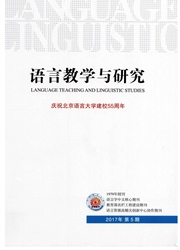

 中文摘要:
中文摘要:
作为汉语古今语序变革的经典案例,比较句的演变历来备受关注。但汉语比较句演变中的一些重要问题却并没有解决。本文在以往研究的基础上,结合汉语比较句语序类型的转变和句式结构的更替,展现在汉语孕育剧变的中古时期,无标记的比较句式普遍存在平比与差比歧义两解的复杂情形,而否定、疑问、假设等有标记的平比句式率先开启汉语比较句的语序变革表示差比,这或从某种程度上说明汉语平比句和差比句之间存在同源派生关系。伴随新兴比较词和框式介词等双重比较标记的出现,汉语的平比句与差比句在完成新旧语序更替的同时,也由起初的交织混同走向分立定型。
 英文摘要:
英文摘要:
In view of some unresolved important problems in the evolution of Chinese comparative sentence, such as the relation between equal and differential comparison, the manner in which the new type replaced the old one, etc., this paper aims to conduct an investigation to expose the homologous derivation of the Chinese equal and differential comparative sentences. It shows that there was common ambiguity in the un-marked comparative sentences in Middle Chinese, while the negative and interrogative sentences not only could express differential comparison distinctly, but also have triggered the word order change of the Chinese comparative sentence. Along with the emergence of new comparative markers like discontinuous preposition, Chinese comparative sentence achieved distinction out of confusion.
 同期刊论文项目
同期刊论文项目
 同项目期刊论文
同项目期刊论文
 期刊信息
期刊信息
